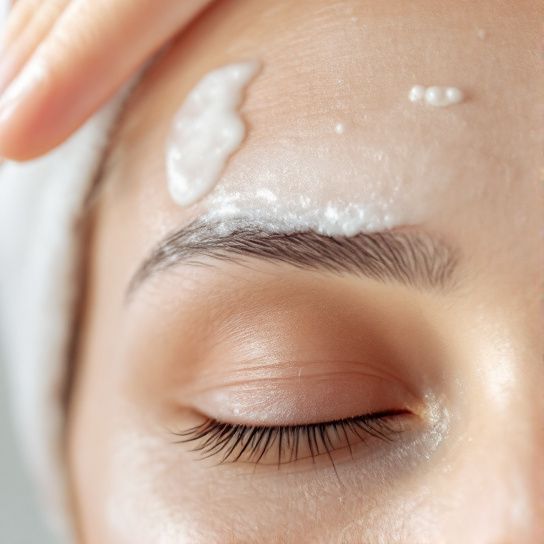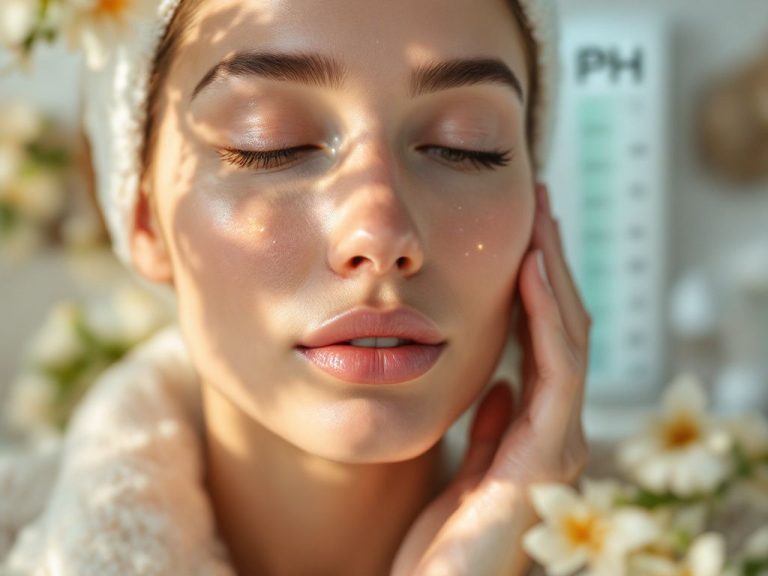Hey there, friend. Staring into the mirror and wishing the acne scattered across your forehead would just vanish, right? That bad forehead acne is definitely tricky and might feel as if it’s setting up camp just where we want our skin the clearest. But let’s tackle this together—yeah, we’re diving into the world of forehead acne today. We’ll figure out what might be going on up there and, more importantly, how we can send it packing without too much drama.
Foreheads can be particularly stubborn places for acne, more so than some of the other areas on a face. Since you’re targeting that area specifically, let’s get into what might be triggering it. Sometimes, it feels like you try everything, but those bumps won’t budge. It’s not just you. Let’s chat about what could be causing this and, throughout our little chat, I’ll drop in some approachable and realistic solutions you can try.
Table of Contents
ToggleLocation, Location: Why the Forehead?
You may think, “Why my forehead of all places?” Excellent question. It roots back to something called *facial mapping*, which is this old-school pillar of Eastern medicine. Essentially, it’s the idea that different parts of your face can tell you different things about what’s happening in your body. The forehead is generally linked to stress, poor digestion, and sometimes too much grease from our hair. Forehead acne can be quite an indicator, letting you know it’s not about some random act of the universe.
Causes of Forehead Acne
Understanding why your forehead acne is acting up can point us directly to a solution. Let’s untangle some possible reasons.
Hair and Hair Products
Look, if your skin is finicky like an old radio dial, you don’t want to be reckless with your hair routine. Hair products can easily slide down onto your forehead, leaving oils and chemicals that clog pores. It’s like sticking a “do not disturb” sign on your pores, encouraging breakouts.

Solution:
Pop your hair back when sleeping or working out—think headbands, clips, or whatever you fancy. Don’t ditch hair products entirely, recognizing their impact could help adjust how you use them. Choose products labeled as “non-comedogenic”—just a fancy word for saying they won’t block your pores.
Sweat and Grease from Your Scalp
Whether you’re hitting the gym or just bustling around, sweat can collect bacteria and then settle onto your forehead, which sets off a breakout. Your scalp’s natural oils can also eventually land there, heralding more acne.
Solution:
Sweat bands and quick post-workout cleanses are rock-solid ideas. Ironically, cleaning too aggressively as if you’re scrubbing an old pan can actually irritate your skin more—be gentle to it instead.
Stress and Sleep
Un tended to, stress and lack of sleep are like growing vines in a garden—they creep their way into everything, including your skin. Stress spurs hormones that can crank up oil production, leading to clogged pores.
Solution:

Engage in any mindfulness practice you see fit, and try to set a consistent sleep cycle. It’s not a magic cure, but you might notice improvement.
Embrace A Thoughtful Skincare Routine
Now let’s move on to something that’s perhaps more tangible—your skincare routine. There’s so much chatter about routines but finding the right balance is key when you’re focused on targeted treatment.
A Step-by-Step Routine:
- Gentle Cleanser: Keep it simple—wash your face with a mild, fragrance-free cleanser twice daily. Think of this as clearing the canvas.
- Exfoliation (Cautiously!): One to two times a week, consider using a mild exfoliate. Skip anything harsh; you don’t want to wage war on your skin.
- Moisturize: Yes, even if you think your skin doesn’t need it. A gentle moisturizer ensures your skin doesn’t overcompensate by pumping out more oil.
- SPF: Going out? Sling some SPF over your moisturizer. A lightweight, non-comedogenic sunscreen stapled into your routine is crucial.
Topical Treatments: Your New Friends?
Causes aside, when acne’s already there, what next? Bad forehead acne or acne anywhere—sometimes targeted treatment straight to the source is necessary. My advice? Look for ingredients known to tackle acne effectively.
- Salicylic Acid: Different from anything trendy, this has been around for ages. It directly tackles the infected pore to aid in unclogging it.
- Benzoyl Peroxide: Think of it like heavy artillery; it tackles bacteria head-on.
- Retinoids: Both a wrinkle-fighter and acne tamer in one. They keep skin cells turning over at an effective pace.
- Tea Tree Oil: For those veering natural, here’s a deserving contender. It’s got some fantastic antimicrobial properties.
Do’s and Don’ts Real Talk

I love me some practical insights. “Do’s” amplify good skin behavior, while “Don’ts” steer you away from common pitfalls.
**Do’s:**
- Do clean your pillowcase regularly. Oils and grime build up faster than you’d think. Once or twice a week should suffice.
- Do drink water, not exciting maybe, but powerful. It helps keep your body’s functions balanced, hydration and flushing gunk out.
- Do patch test new treatments. Apply anything new onto a small area first, observe for adverse reactions, then dive in once you’re comfortable.
**Don’ts:**
- Don’t pick or pop those zits, easy reminder here. Regret inevitably follows, as this can exacerbate scarring and spread bacteria.
- Don’t overload on products. Keeping your routine minimalist often benefits skin that’s got loads of oil or acne troubles already.
- Don’t skip dermatological consultations if acne persists beyond topical solutions. Specialists know their stuff.
Wrapping It All Up
There we have it. I get it, bad forehead acne is a pesky issue that can feel deeply personal and frustrating. But you’re armed now with insights ranging from potential causes due to facial mapping’s wisdom to ways of combating them creatively and practically.
Small adjustments at your pace are key. Stay observant, pay attention to your skin and adapt. You might not remember all of this precisely, but hopefully, you’ve pocketed a couple ideas worth trying. Trust me, knocking a few aimless factors from your path is all it takes for that radiance to find its way back to your skin. Chin up, friend; tomorrow could be the start of better forehead days!
Frequently Asked Questions
What causes bad forehead acne?
Bad forehead acne is caused by the clogging of pores with oil, dead skin cells, and bacteria, leading to inflammation. Key factors include hormonal changes, stress, certain medications, and environmental factors such as hair products, hats, and headbands that can irritate the skin and clog pores[1][2][5).
How can I treat bad forehead acne at home?
To treat bad forehead acne at home, use products containing ingredients like benzoyl peroxide, salicylic acid, or azelaic acid. Benzoyl peroxide helps kill acne-causing bacteria, while salicylic acid dissolves the bonds holding dead skin cells in pores. Ensure to wash your face twice a day with a gentle cleanser and avoid picking or squeezing pimples[1][2][3).
What are some common triggers for forehead acne?
When should I see a dermatologist for forehead acne?
You should see a dermatologist for forehead acne if your acne is severe, persistent, or not responding to at-home treatments. A dermatologist can prescribe stronger medications such as oral or topical antibiotics, retinoids, or hormonal treatments. They may also recommend in-office treatments like laser therapy or chemical peels[1][2][5).
References- Cosmopolitan. (2023). Forehead Acne: The Causes and Best Treatments According to Derms.
- London Medical. (2023). How To Get Rid Of Forehead Acne.
- Healthline. (n.d.). Forehead Acne: Causes and Treatments.
- Medical News Today. (2024). Forehead acne and pimples: Causes, treatment, and prevention.








